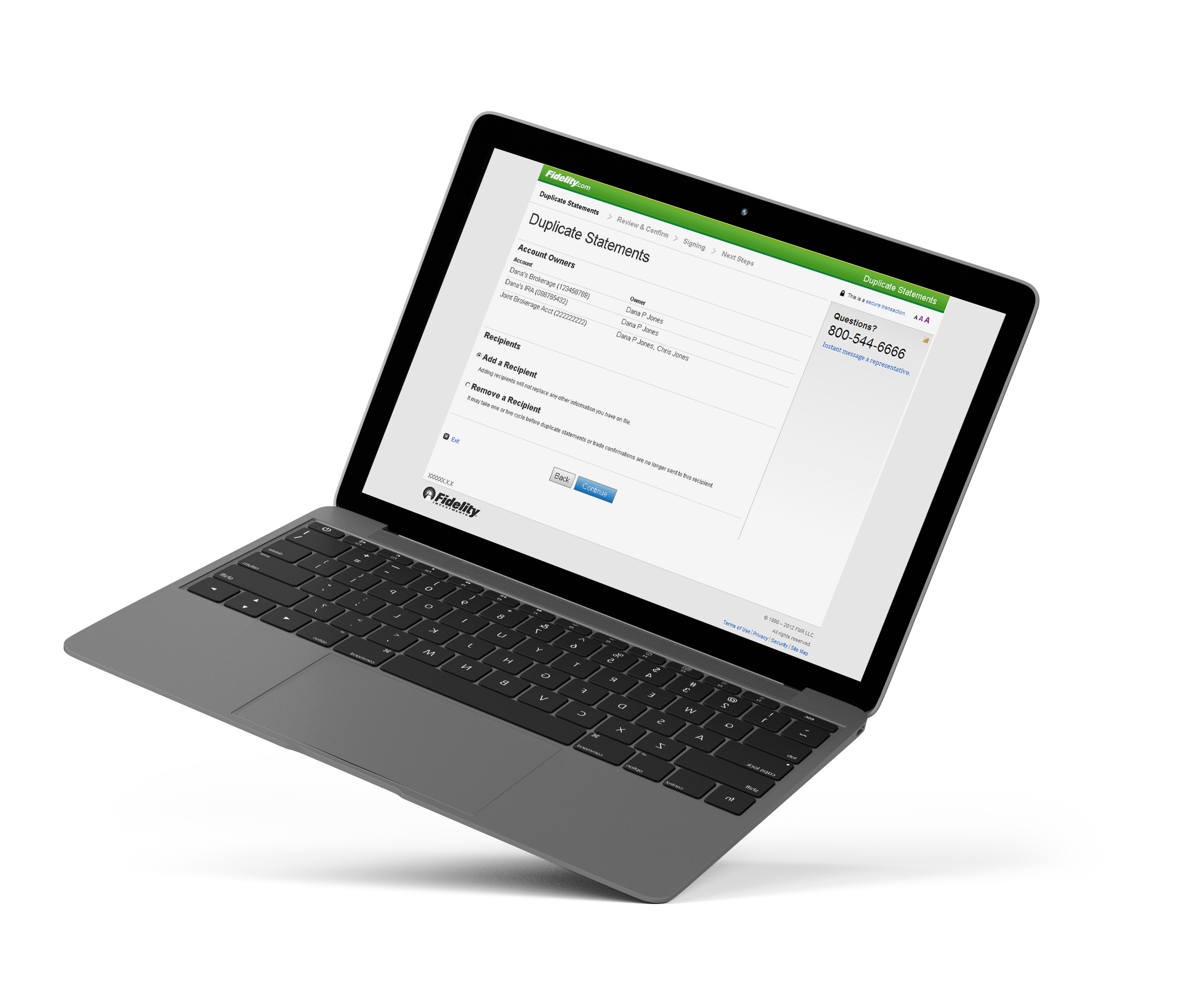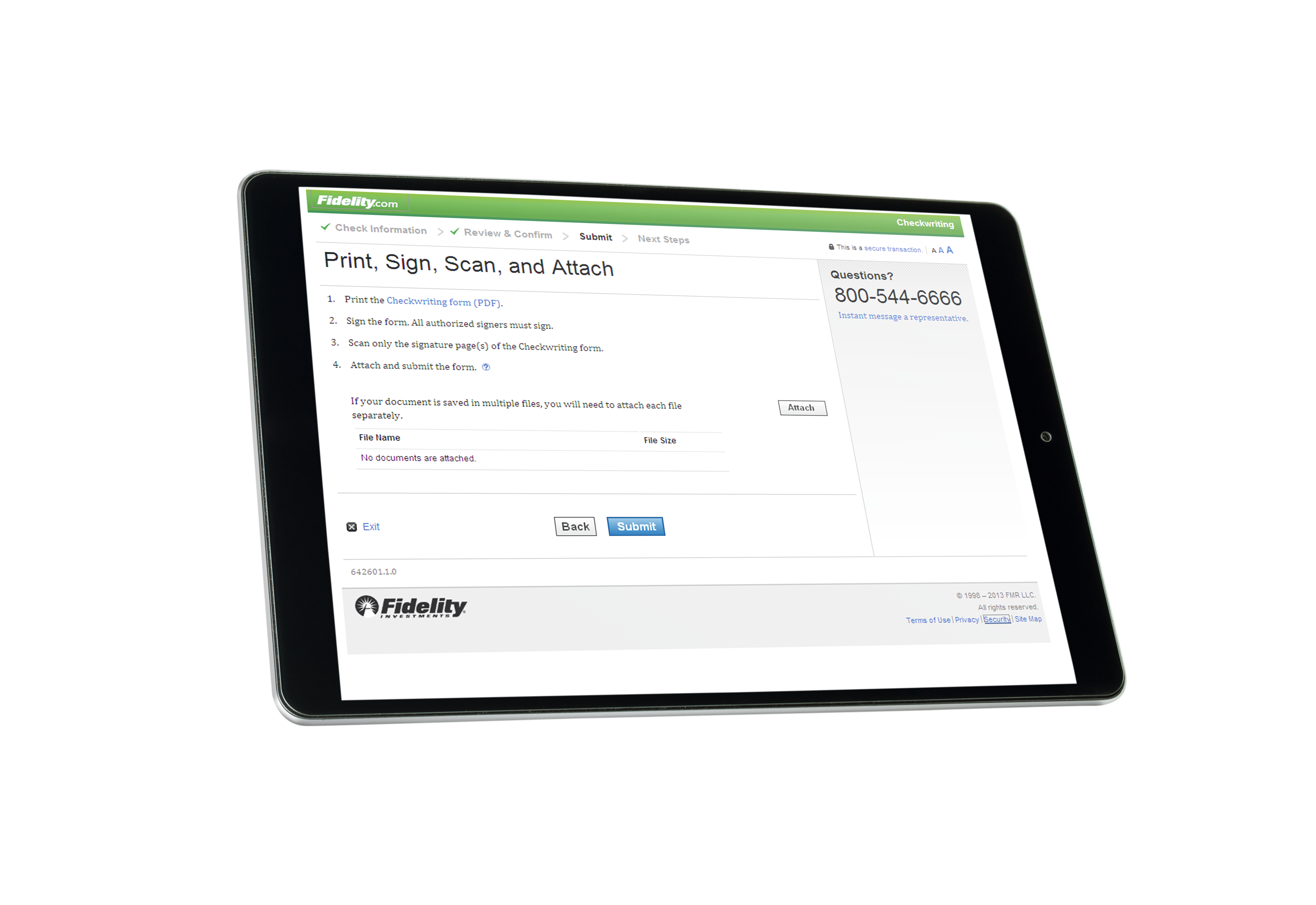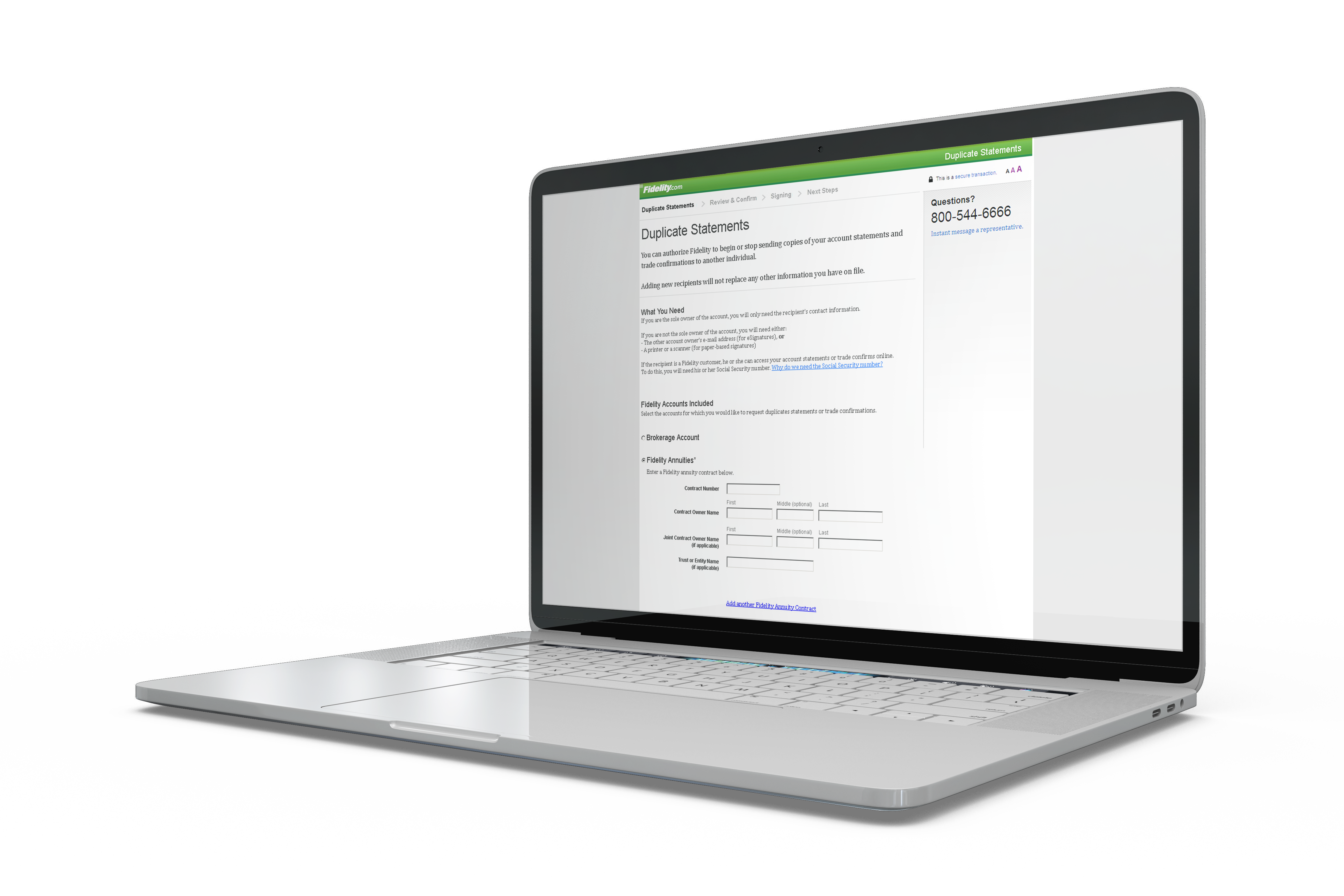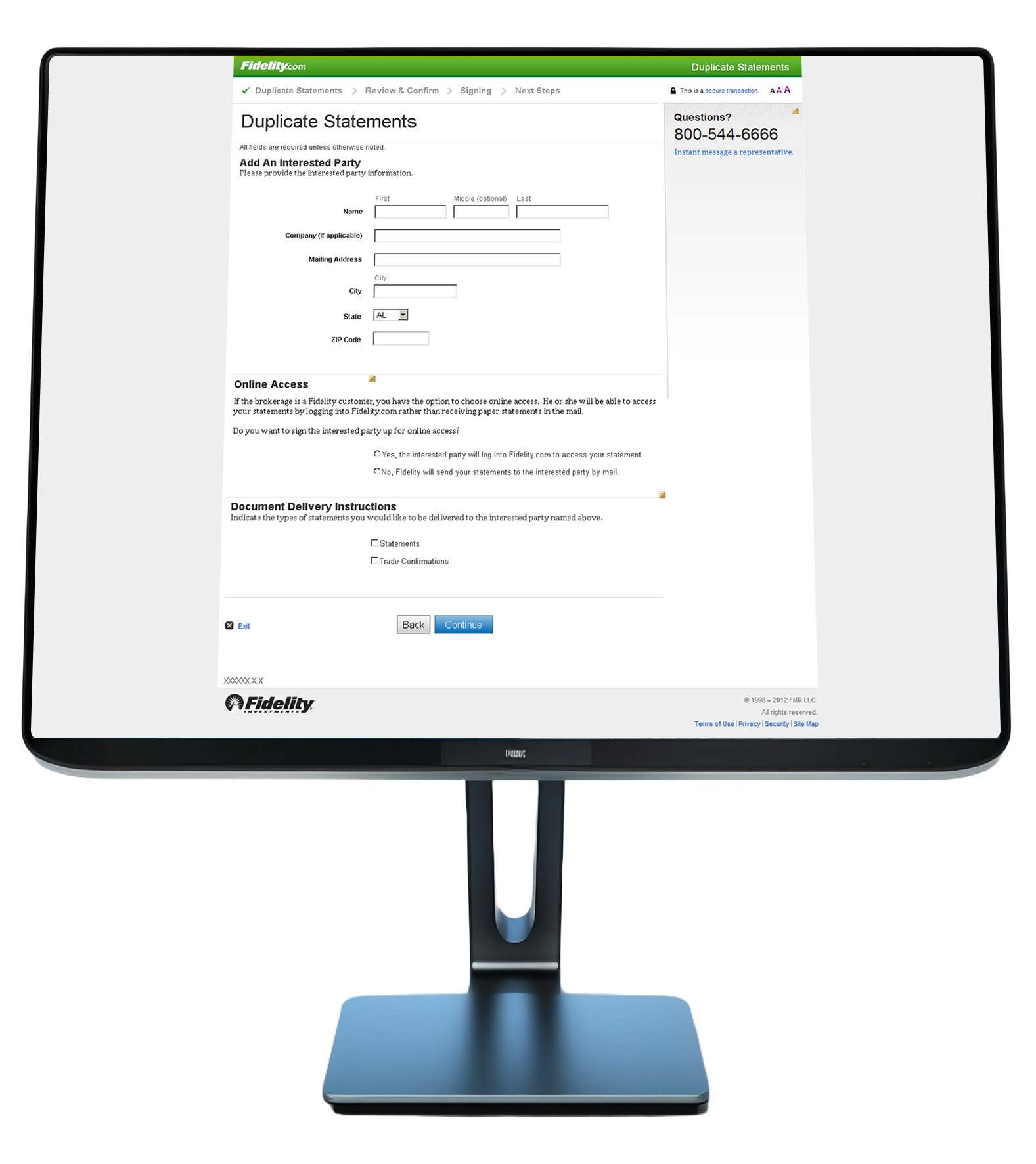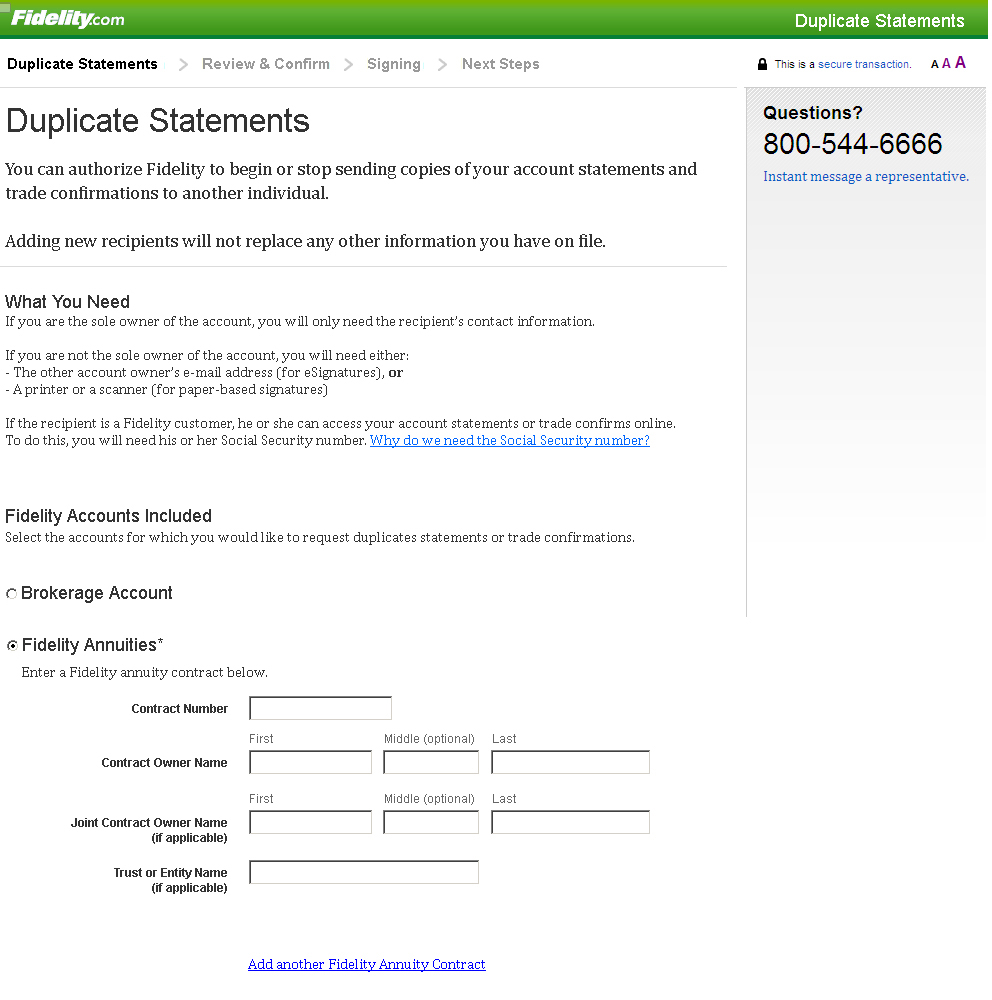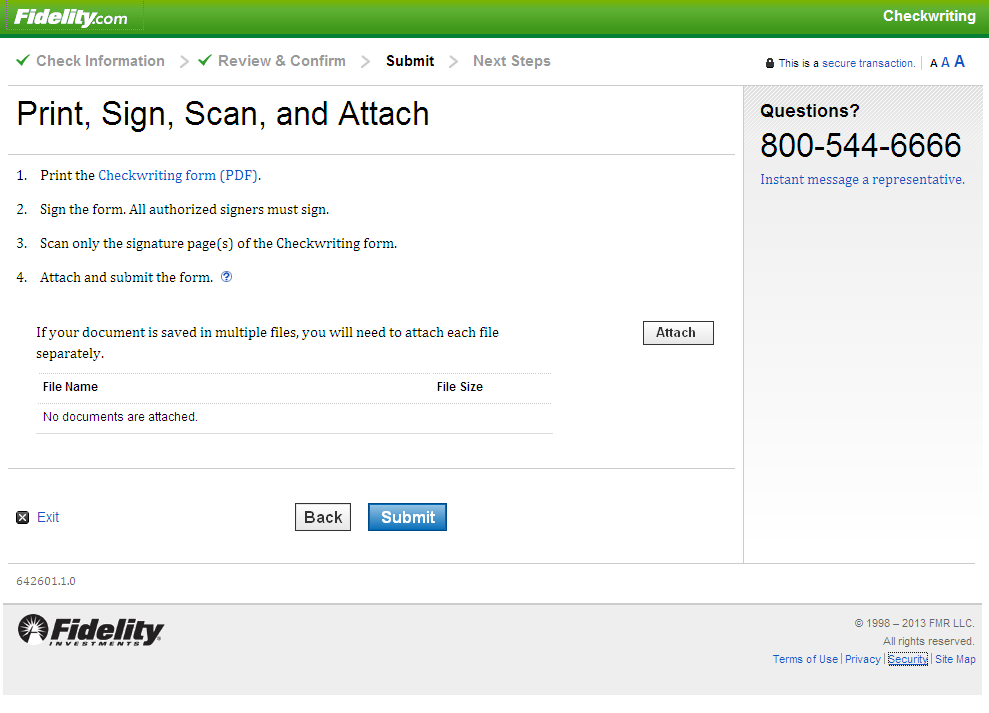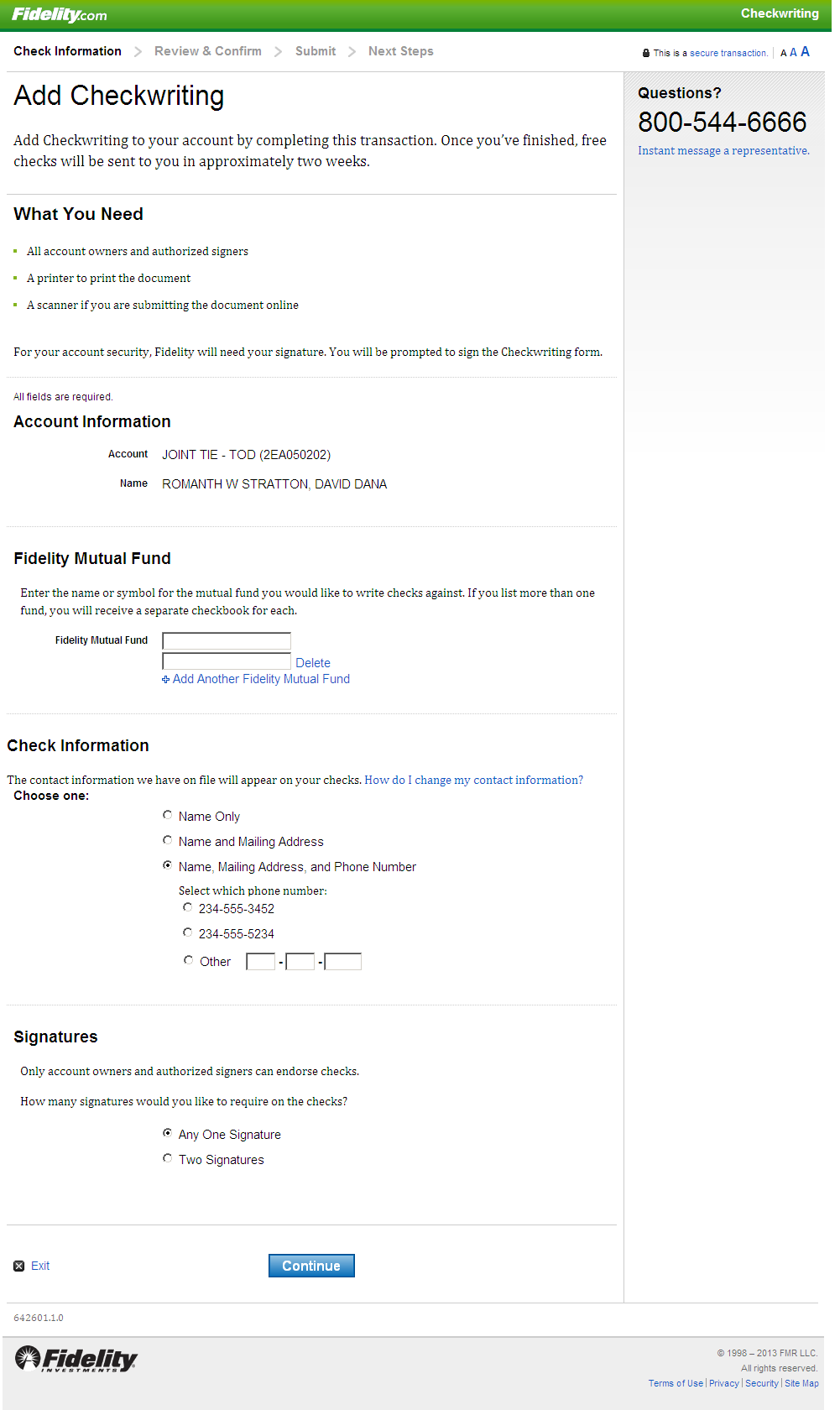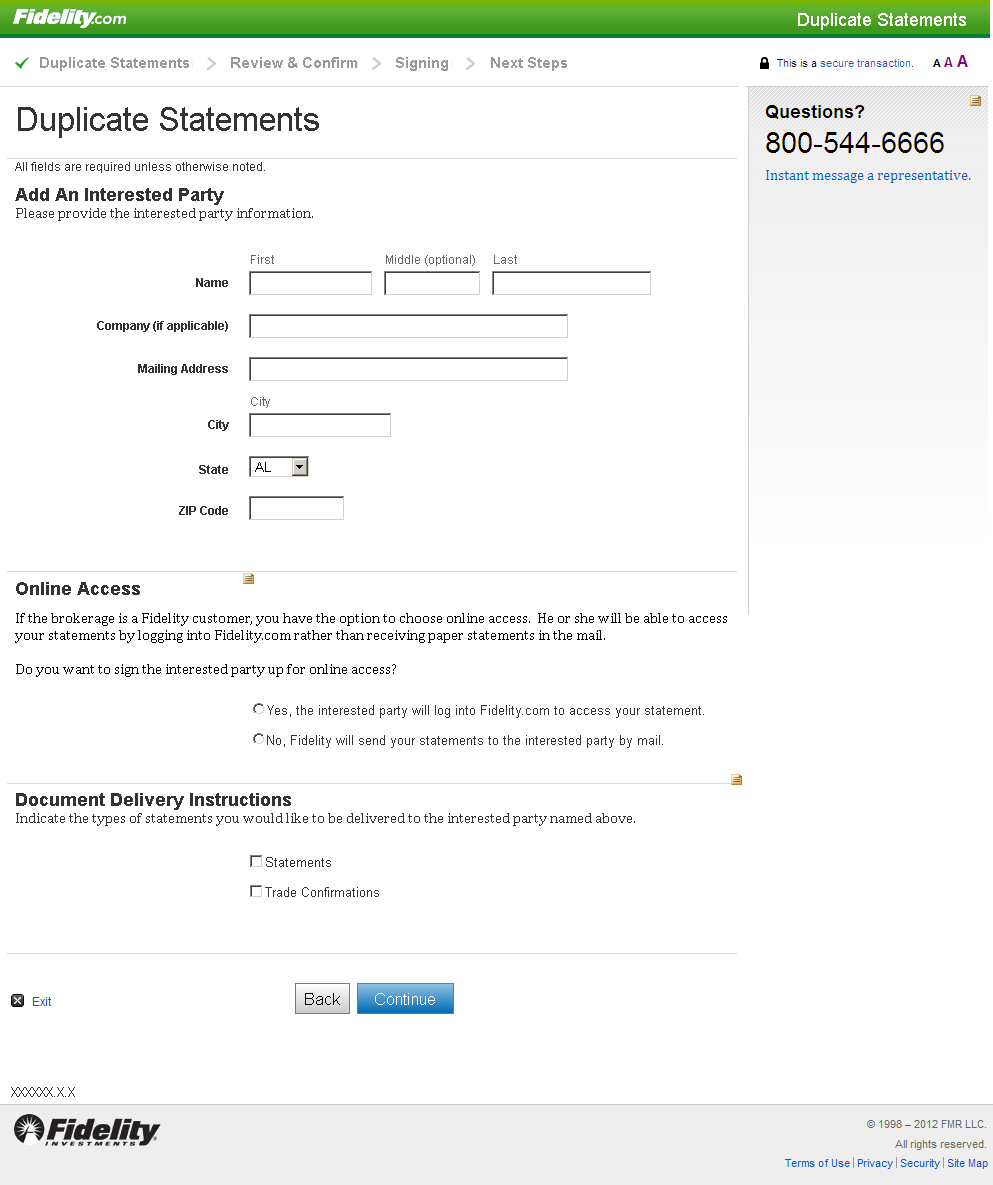Fidelity Customer Service Digitization
Compliance and technical constraints kept Fidelity in the paper age until this digital conversion enabled customers to process their forms quickly and easily and without harming any trees.
Financial services companies often struggle to take their operations online because of the compliance requirements established by government and industry regulators. With such a heavy emphasis on transactions, converting from paper to digital document management is very challenging. I was staffed on a project with a mandate to do just that – shift existing paper-based transactions to web interactions.
Overview
Constraints
Even though the user experience for the transactions was online, these forms filled out online would eventually need to be printed and processed. That’s right, Fidelity’s infrastructure to process these transactions was created decades ago and was extremely reliant on mailed paper documents. They even located their mail processing center in the same town as the IRS to save on sizable postage costs! So the data inputs that were presented to the user needed to be synchronized with the old paper forms. Additionally, the business sponsors for the project were unfamiliar with online transaction design; instead, they were specialists in processes these legacy paper documents.
Audience
The audience for these projects varied across the personal investing business. From traditional banking transactions such as activating features like check-writing to assigning beneficiaries and powers of attorney, we produced online transactions that virtually every Fidelity personal investing customer would encounter.
Role
Initially, I was staffed on the project as a design system advisor. But as the most senior member of the team, my role eventually changed to a project lead, helping to drive design decisions, negotiate with stakeholders and technical partners, and ensure deliverable quality. The rest of the design team didn’t have much experience testing production code, so I established a process to not only identify defects, but also formalized the interactions between design and development, leading to a more productive (and harmonious) relationship.
Design Process
My leadership on this project focused on:

Scalable design systems
Collaboration across multiple sites

Negotiating technical constraints
Business partner relationships
Leadership by informal influence
The biggest challenge in this project was the intrusion of back-end infrastructure as design constraints. For example, if inputs were appeared in order on the original paper form, the technology team would request that the online UI presented them identically. I negotiated these conditions and helped the developers separate the front-end UI presentation from the back-end data structures, untying the designers hands and enabling them to optimize the presentation for the user. We conducted a number of usability studies that showed business and development partners that UI inefficiency and confusion equaled abandonment, phone center spikes, and invalid submissions, all of which were negative key performance indicators for the program.
Results
By the time we had converted a few of the paper forms to digital format, the development resources had become advocates for the user experience. As they gained appreciation for the value of good UX, they stopped accepting the constraints of the technology and began to insist that they be given resources to update that technology. Ultimately, this resulted in a re-evaluation of the technical interface between the data input front-end and the back-end database, setting Fidelity up for much greater scalability in this area of their business.

